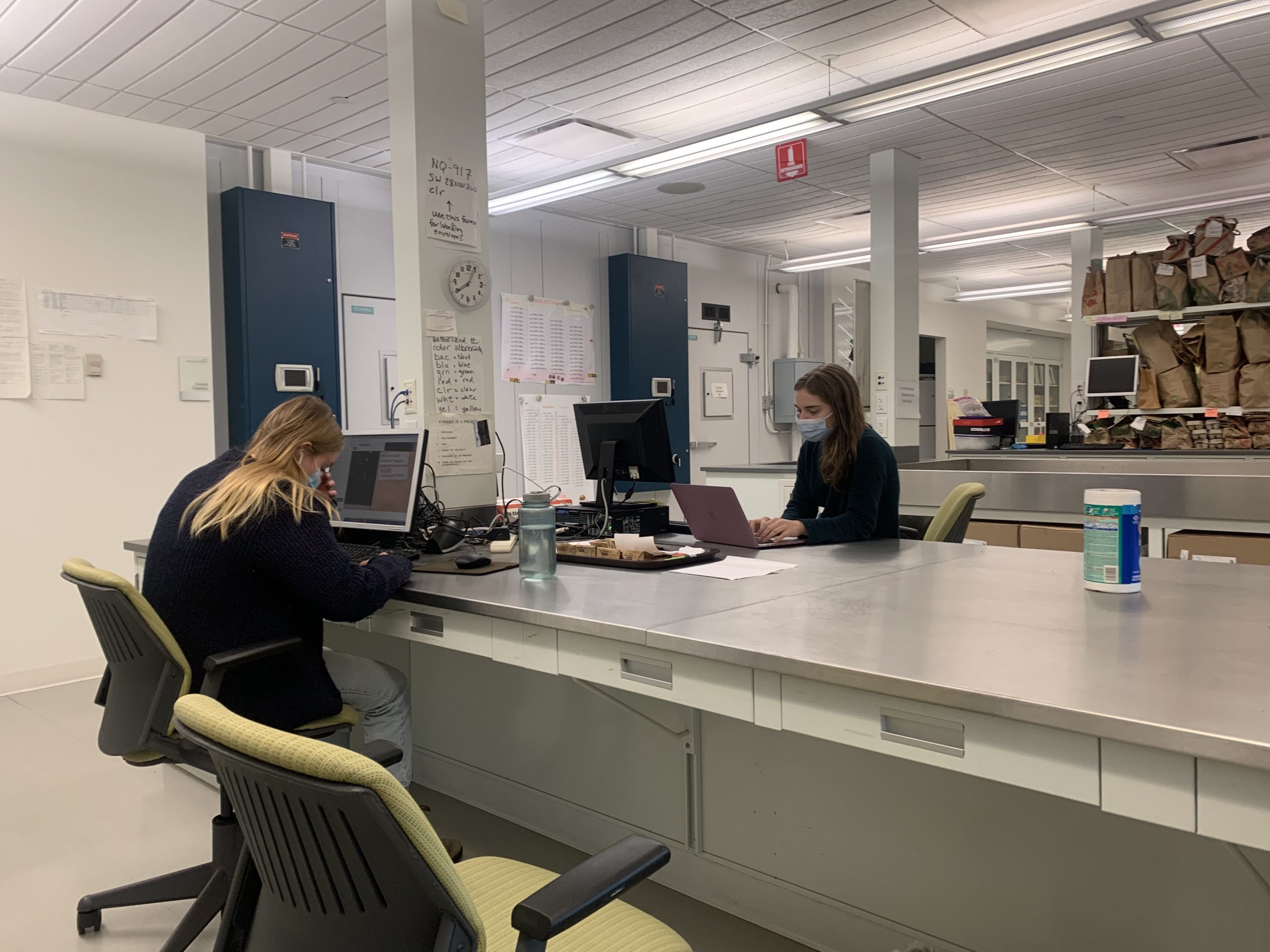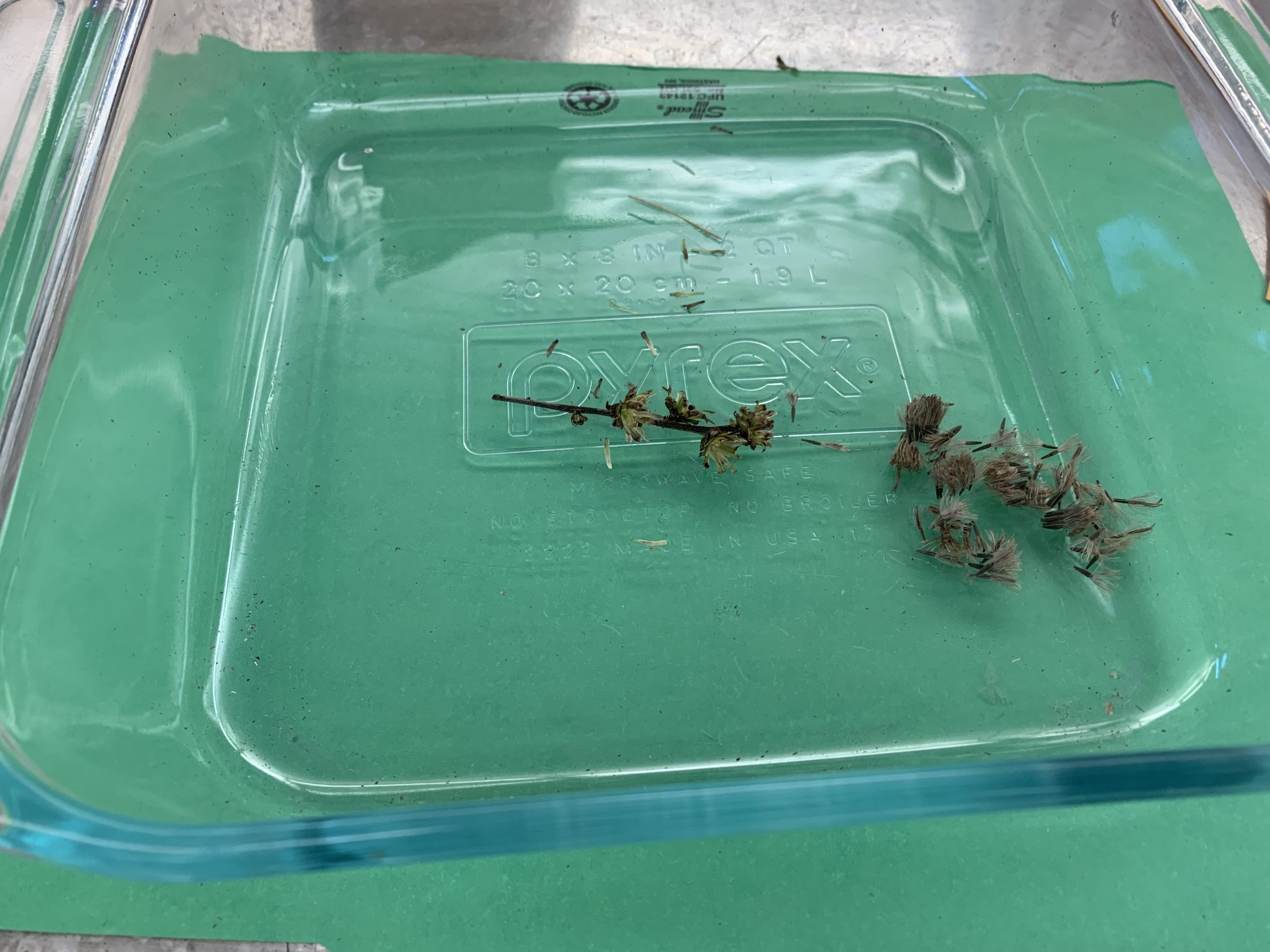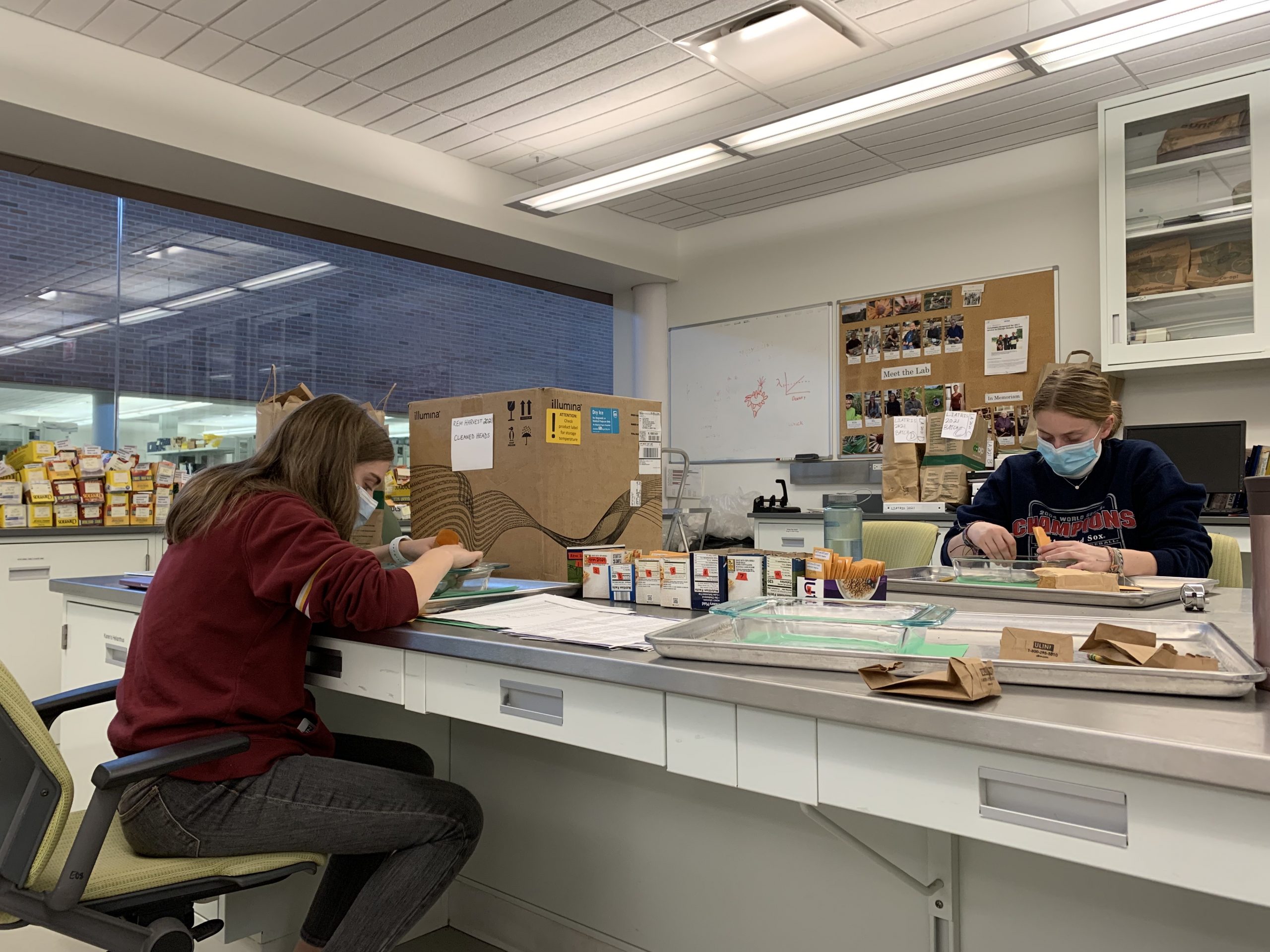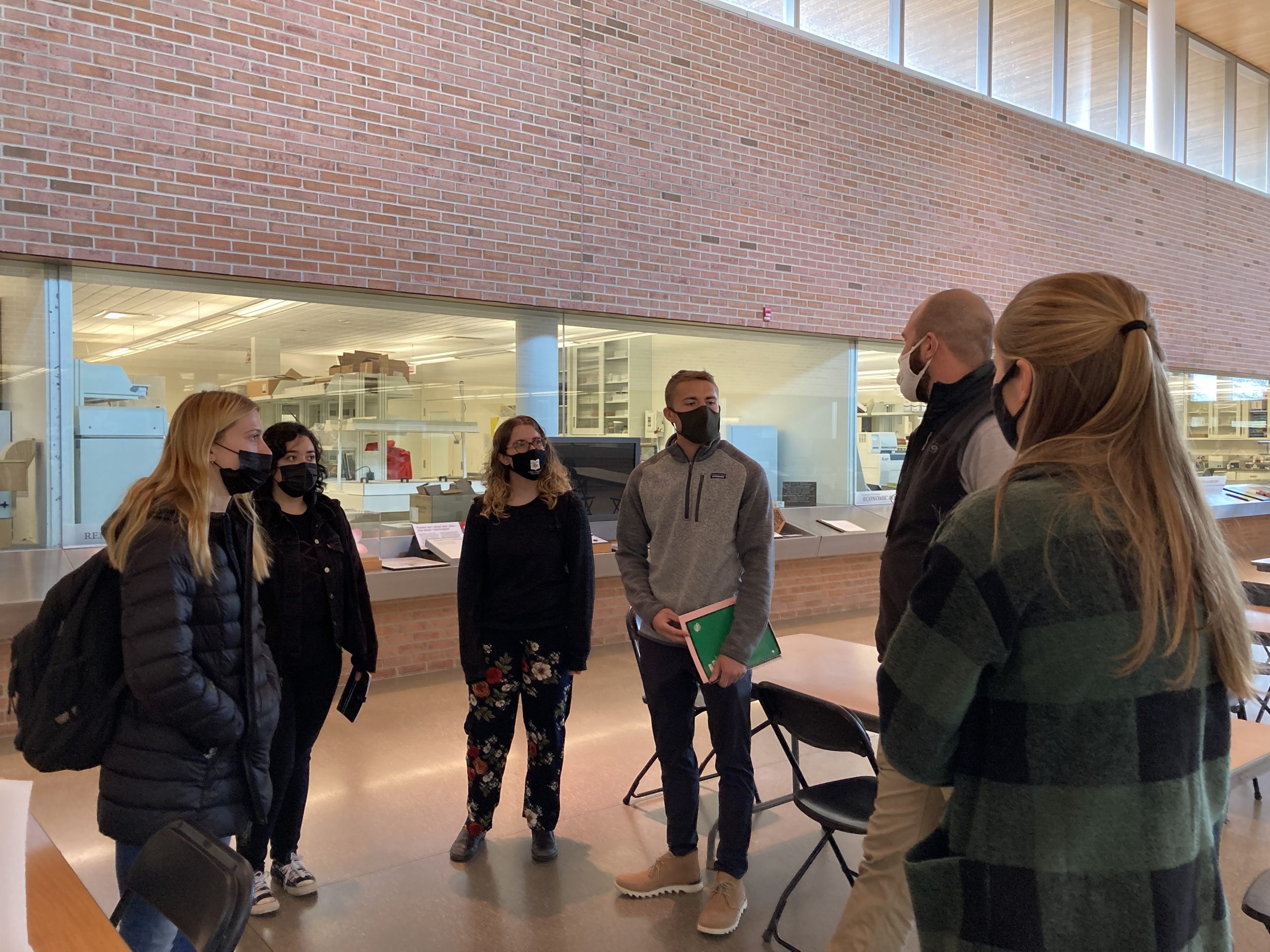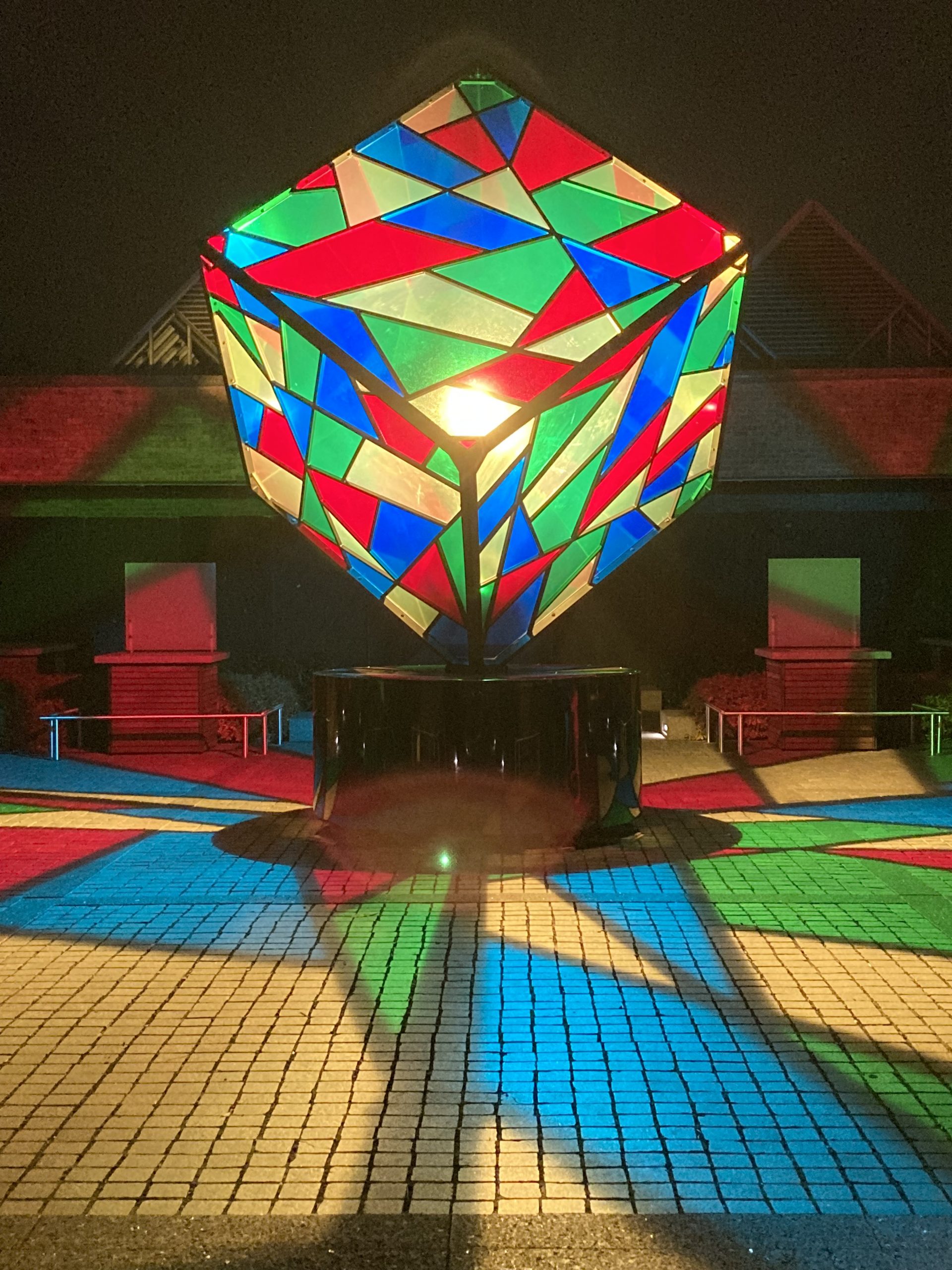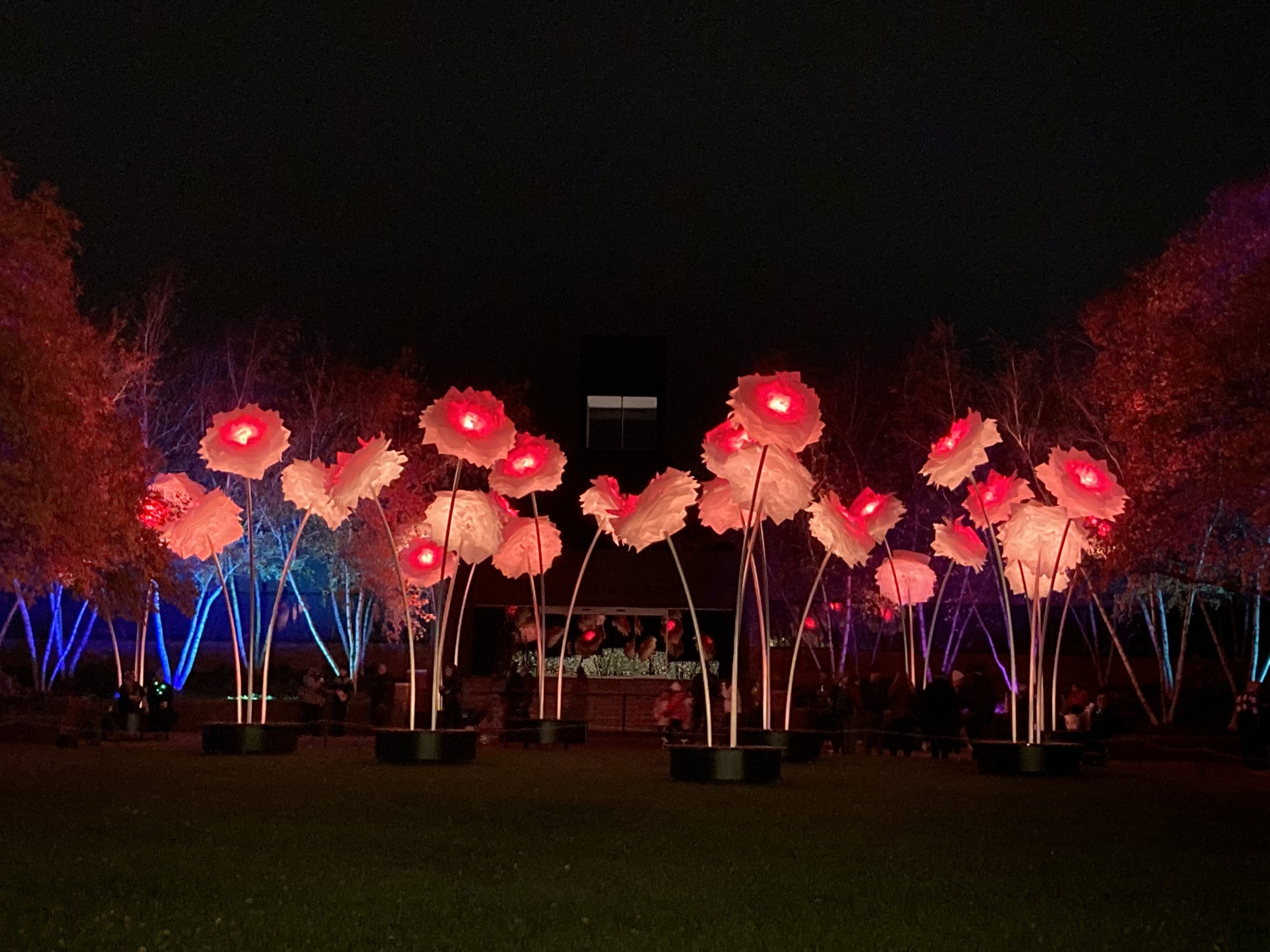Alondra, Connor, Maeve, and Marina finished their mini-internships with us. It was a great experience for them and us. We appreciate their contributions to science and conservation and they gained valuable experience. As part of their plant biology class, Alondra, Connor, Maeve, and Marina, who are juniors and seniors at Lake Forest College, worked on two projects to assess effects of prescribed fires on reproduction in Echinacea. In the lab, they gained hands-on experience in seed biology over three Wednesday afternoons, including cleaning, scanning, counting, developing hypotheses, and data management. To test their hypotheses, they developed a dataset and summarized their results. In class they presented posters and they are attached here. It was a wonderful mini-internship–thanks to Alondra, Connor, Maeve, and Marina, as well as Prof. Westley!
|
||||
|
The second week of the externship is coming to an end. We started the day by finishing off all the counting we needed for our final project. We counted achenes of echinacea heads harvested in 2020 and 2021 from several burnt and unburnt places. The echinacea plants these heads came from also had variation in density and number of heads produced so that the data we generated from counting would be helpful for all of our projects. We had our weekly lab meeting at 9 and talked about a paper Jared had been working on. I learned more about the process of scientific writing and it was inspiring to learn that studies of one particular plants could provide insight into methodology used in ecological research in general. Later in the afternoon, we had a brainstorming session on preparing for our presentation next Friday. We all discussed our hypotheses, potential graphs, diagrams and pictures to include in a slideshow. We all felt more confident about it and were excited to see what we could find out next week! This week we’ve been making good progress on gathering the necessary data for our projects! An important part of this, especially for mine and Wanying’s projects, has been outlining our randomization protocol for liatris. After brainstorming a liatris randomization protocol yesterday to ensure we would be getting unbiased samples for our data, today we finalized some of the details of our protocol and started randomizing! We spent the majority of the day creating random samples of liatris achenes to use for our projects, and we were able to get 60 samples done. It was exciting to put a protocol that we had drafted into practice, and continue working towards our data sets and the final product of our projects. The variation of achenes from each plant was also very apparent during the randomization process. We finished off the day with some echinacea achene counting, which will be important for Caitlin’s data analysis. It’s fun to get a variety of different tasks throughout the day while contributing to different projects. I’m looking forward to more randomizing tomorrow and doing more work on our projects! We’re now past the midpoint of our externship! This week we are focusing more on gathering the data for our own projects, so yesterday Alex and Mia gave us a list of Echinacea purpurea samples that would be helpful to use in my project. Cassie, Wanying, and I separated these samples and moved them through the entire process we had learned so far, including cleaning, rechecking, random letter-number label assigning, reordering, and scanning. Thanks to this work, we only had a few scans to do today and redid the scans that did not have any achenes so that they now include a note to any potential counters. 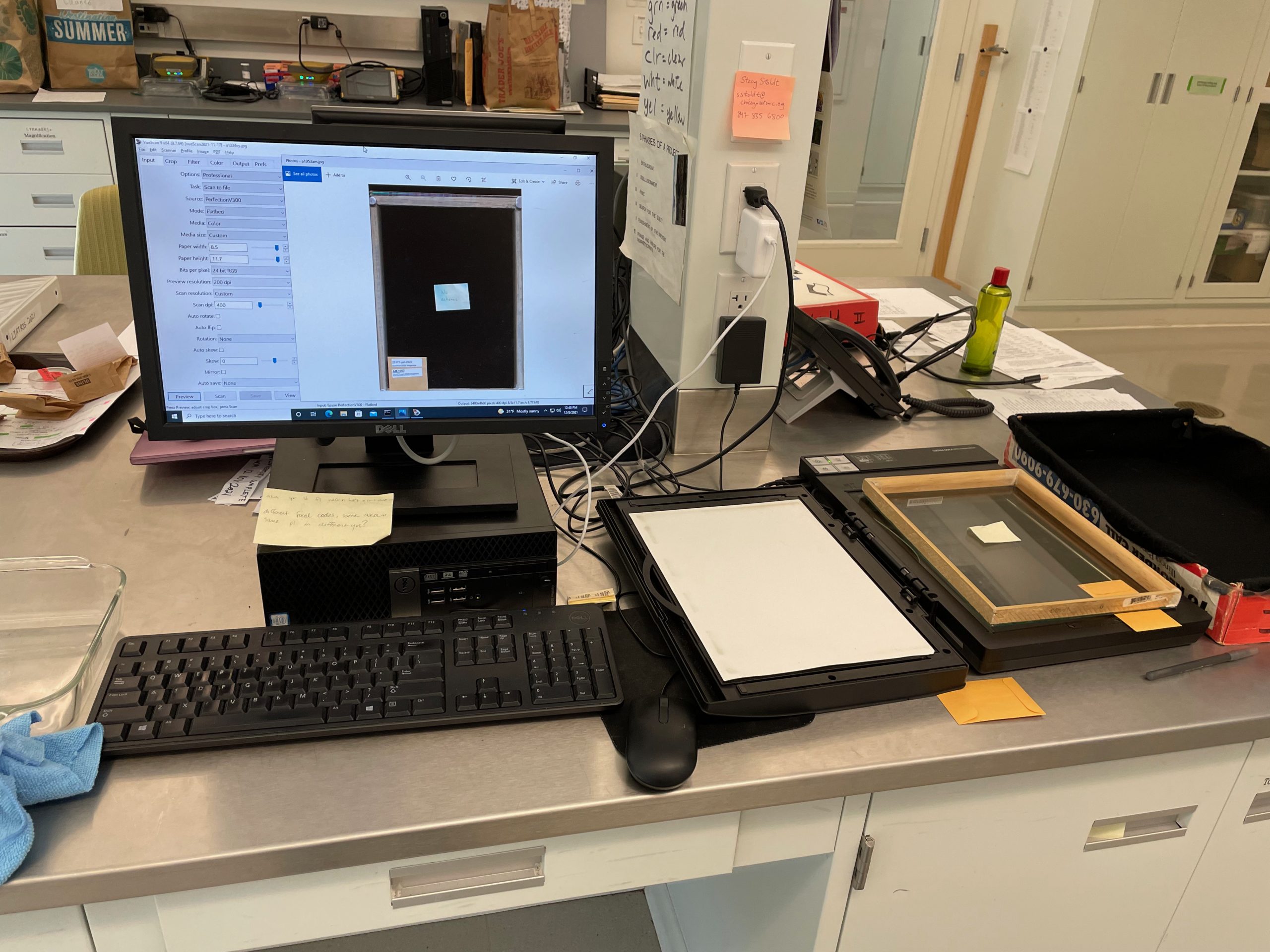 Then we started thinking about Liatris aspera, which is used in Cassie and Wanying’s projects, and how to randomize each plant’s achenes in order to get smaller samples that can be realistically checked for seed predation and x-rayed. We learned the Echinacea randomization protocol today, but there is no protocol for Liatris, so we brainstormed one together based on the challenges of Liatris and our goals. We started to draft this protocol into a document listing our objectives, materials, troubleshooting tips, and methods. Then we cleaned Liatris until the end of the day, and I made endless more grub friends. 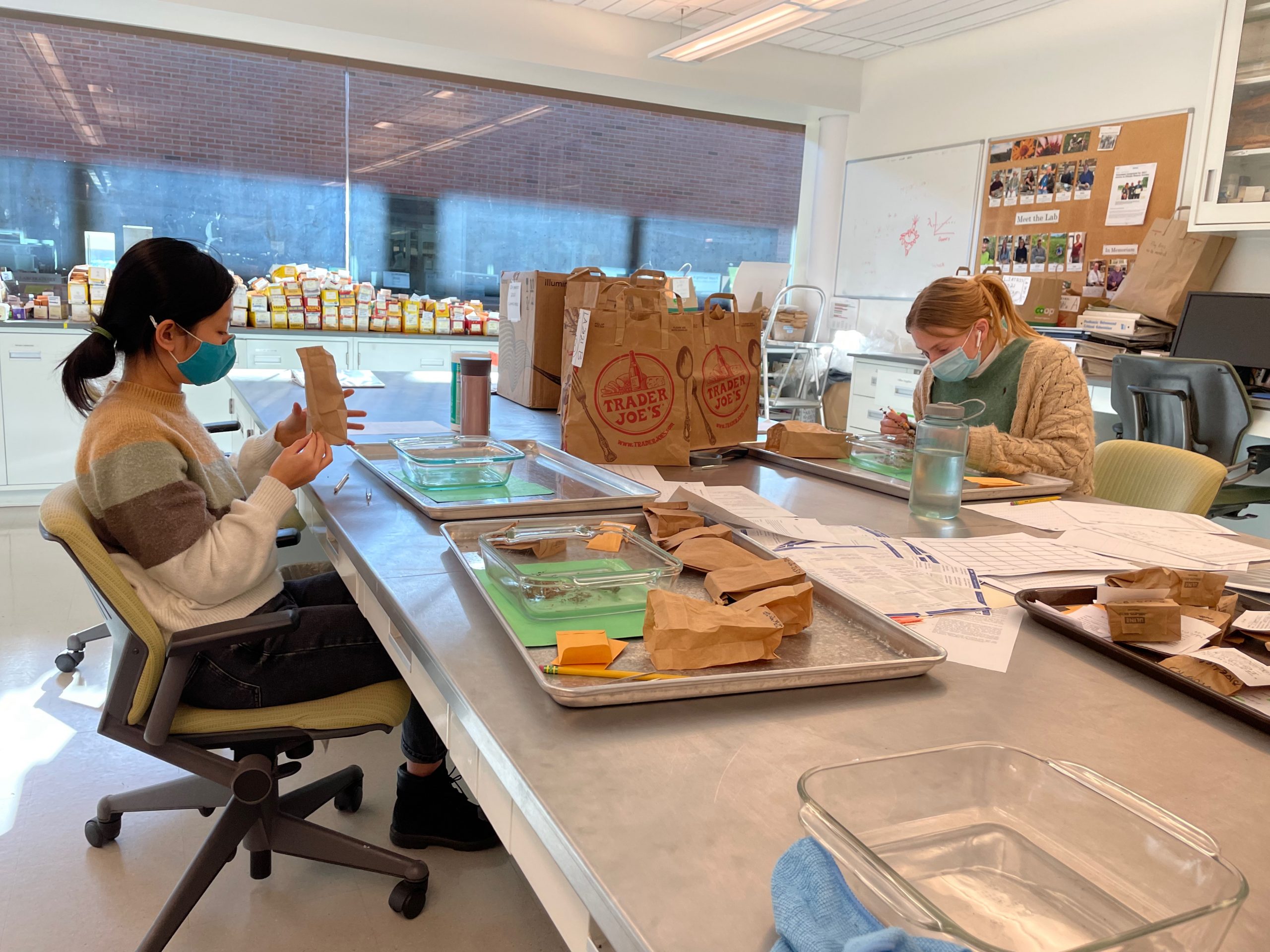  I’m excited for tomorrow, which is when we’ll hopefully be able to start randomizing and maybe even putting our protocol to the test! This Friday was day 5 of our externship and we had plenty of new experiences! We started the day by learning how to cleaning a different flowering prairie plant, liatris, or rough blazing star, with Wyatt. Compared to echinacea, achenes of liatris are much easier to be separated from the chaff and the receptacle. However, the fruits of the liatris are spread by wind. So the achenes all have fluffs attached to them which is a little challenging to separate sometimes. Then we participated in the echinacea project’s weekly lab meeting. We read the draft of a paper Lea had been working on and listened to lab members discussing it. It was really fun and inspiring to see the process of scientific writing and experience the lab as such a collaborative space. I learned a lot about the behind the scene processes in doing science such as designing experiments, deciding on certain sets of data to use for a given topic and different ways to present data. Right after the lab meeting, we listened to speed talks given by ecologists working in different departments of the Garden including aquatics, remnant forests and some other natural areas. I learned a lot about the history of the Garden as well as challenges and successes in managing different ecosystems within the Garden. I was really surprised when I learned how much work went into maintaining the lake area and the shores of lakes – planting, reinforcing, cleaning algae and other unwanted aquatic plants and so on. It was a great experience listening to talks by ecologists doing hands-on restoration and conservation work here in the Garden. We also learned the ABT format of presenting a project and all three of us tried to come up with one for our projects here. We also decided on what we’ll be doing for projects. Cassie would be looking at density and seed set in liatris, Caitlin fire and seed set in echinacea, and I would be looking at number of flower heads and seed set in liatris. We planned to do some cleaning, rechecking, scanning, counting and X-raying to get part of the data we need and then do some data analysis. With this in mind, we were much more motivated to do some more cleaning and rechecking and dive into the second week of our externship! As the first week of our externship is coming to a close, we’re learning more about the different procedures and tools used in the lab. After finishing up our rechecking and organizing of the 2020 harvest yesterday, we began scanning today so that we can eventually move on to the next step and count achenes. While we scanned, we also took turns continuing the daunting task of rechecking the cleaned 2021 harvest. Here’s Wanying and Caitlin working on rechecking while I scanned: 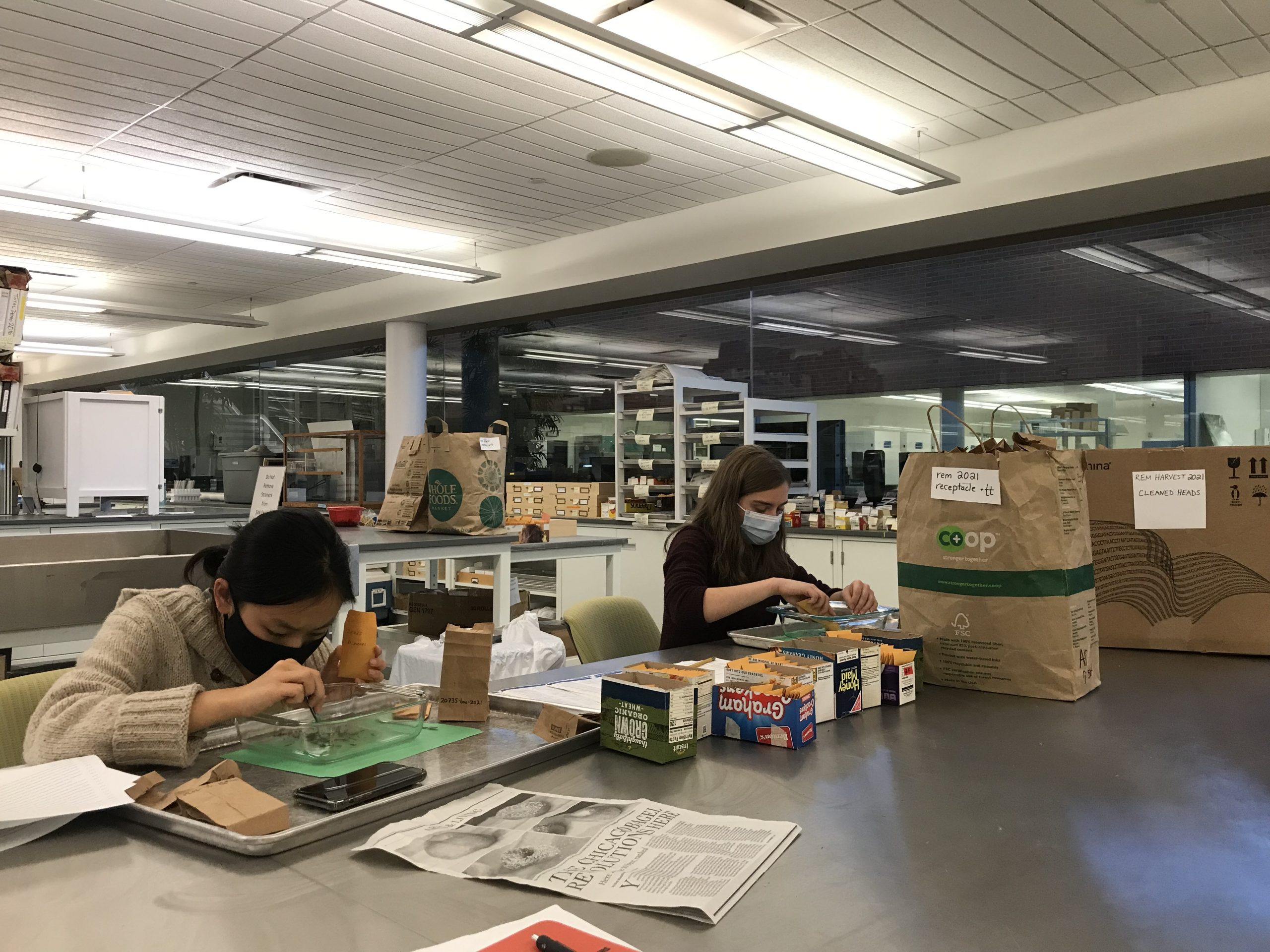 As fun as scanning and rechecking is, the most exciting part of my day was easily getting to watch a prescribed burn on some of the restored prairie. While the fire was pretty slow and patchy for the most part, it picked up speed during the tall grass sections and was pretty cool to watch overall. Getting to actually see a prescribed burn in practice after learning about it and its effects in the lab was really interesting. It was also a pretty valuable experience in that we got to watch and learn about how prescribed burns are done and the different tasks and precautions that go into the process.   After watching the burn and doing some more rechecking and scanning, we had a meeting with the lab team to brainstorm for the independent projects we’ll be working on for the last two weeks of our externship. We talked about different possible project ideas and questions we could investigate, but struggled some with the feasibility of accomplishing our goals in just two short weeks. However, after some more brainstorming and reevaluating, we were able to come up with some exciting ecological questions to investigate in the lab for the next couple of weeks! Overall, this week has brought lots of new knowledge about the lab processes and the various projects they contribute to, as well as some great background and context for thinking about goals and ideas for the rest of the externship! Today marked the third day of our Carleton externship! We started out early in the lab, cleaning echinacea heads with some admirable longstanding volunteers. Then we started rechecking the 2020 cleaned batches instead, and I felt like I had moved up in life. 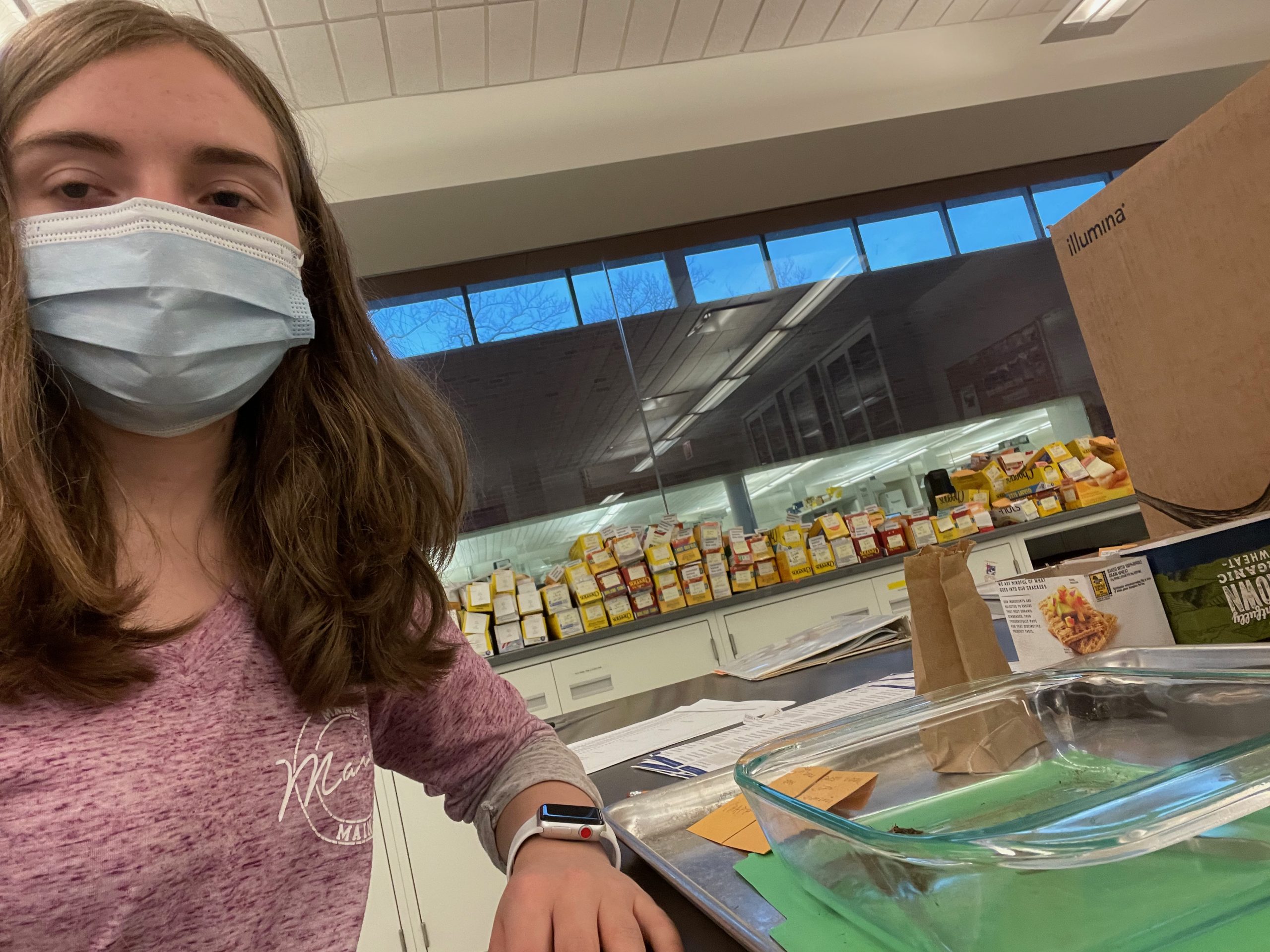 Funnily enough, a couple of days ago I was timid to touch anything in the lab that I could possibly mess up, but now I just dive in and a few hours pass by like nothing. After we finished the 2020 rechecking (yay!), Wanying and Cassie started reordering the 2020 envelopes, which were assigned random labels in order to remove biases during analysis. 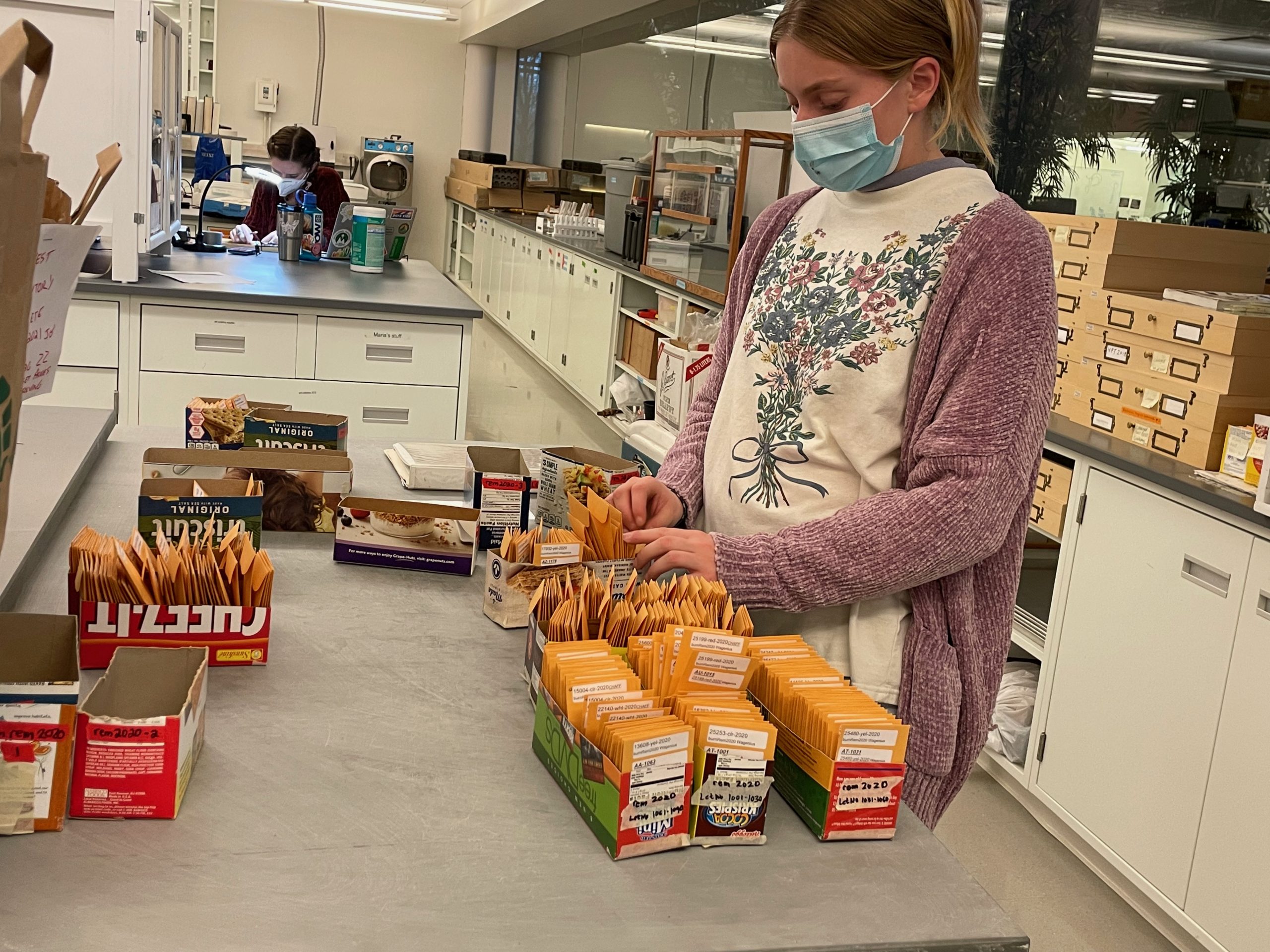 I, on the other hand, started rechecking the 2021 batch. I definitely realized how much I loved having the others’ help, as after today I am still left with this 2021 mountain of a box: 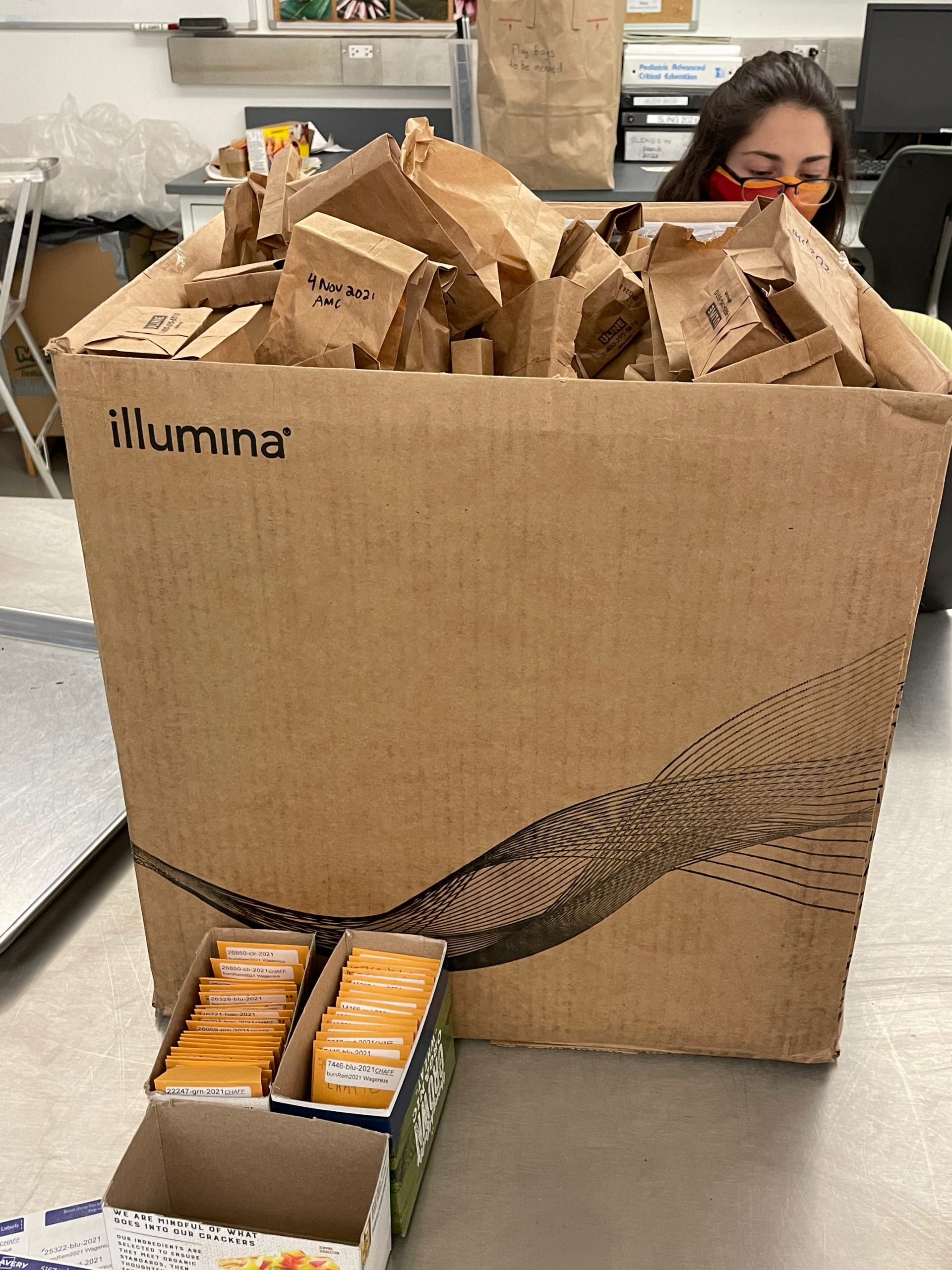 In addition to learning more about the research process, I enjoyed our meeting with Jared today, who prompted us to start thinking about what projects we want to pursue during the externship. Some ideas came up about working with the data at different stages, meeting with other employees at the garden, and proposing hypotheses that can be answered with the team’s available lab data. The day ended with some great banana bread from Alex and a plan of more project group brainstorming the next day. My goals for tomorrow include both the project focus and the 2021 box. Tomorrow we also move along the process and start scanning the ordered achenes. Overall, today gave me an appreciation for the people contributing to this project as well as excitement for how I can explore my curiosities using the research and guidance of this incredible team. Today, the Lake Forest College students returned for their second day at the lab. After cleaning heads last week, they moved on to the next steps of the ACE process today: quality control and scanning. They worked in teams of two, so one group rechecked cleaned heads from rem2020 and rem2021 while the other group scanned the achenes that had passed the quality control step. The students will have a dataset of 40 echinacea heads from 2021, 20 burned and 20 unburned, as well as 40 heads from 2020. They wondered whether the drought this summer affected seed production in echinacea or whether controlled burns influence achene count, and they developed hypotheses to test these questions. The new x-ray machine also arrived this week! It showed up in an enormous wooden crate, but fortunately the machine itself is not that large. Today, the company representatives gave us a tutorial of how to operate the x-ray. We will need to do some trials to find the best settings and adjust our protocol to the new machine. For example, we will need smaller sheets of paper to fit in the x-ray. Based on today’s test run, it seems that the x-ray can only hold 15 bags of achenes (3 rows of 5) at a time instead of 20 bags (4 rows of 5). However, each image takes only 45 seconds, so hopefully it won’t slow down the process too much. According to the Kubtec website, this model is also good at x-raying explosives, art, and gems, so I guess that might come in handy, too. Today, we welcomed four undergraduate students from Lake Forest College: Alondra, Connor, Maeve, and Marina. As part of their plant biology class, they will conduct a project related to fire’s effect on echinacea reproduction. At the lab, they will gain hands-on experience for three Wednesday afternoons, and their project will culminate with a poster presentation. Today, everyone learned how to clean heads from the rem 2021 harvest. Next week, they will develop their hypotheses and hopefully practice scanning and counting achenes from remnant echinacea populations. This evening after dark, several of us attended the Chicago Botanic Garden’s annual lightshow, called Lightscape. At night, the garden was completely transformed by holiday music, elaborate sculptures, a laser show, and even a glowing ball of yarn. It was quite impressive! Hello Flog! This has been an exciting last week for the Carleton externs in the Echinacea lab! We had the incredible opportunity to not only analyze our collected data in R, but also to develop posters about our findings and present our results to the resident members of Team Echinacea. Tris’s project examined the effects of pollen limitation on future growth, survival, and fitness in Echinacea. Check out Tris’s flog entry for more! Meanwhile, Sarah and I determined that previous prairie burning and plant characteristics like flower head count may interact to differentially affect reproductive success in some Asteraceae. See Sarah’s post for the details! It has been a pleasure working with the Echinacea Project over the past three weeks, and though this is our last day in the lab, I am excited to bring all that I have learned here with me into the future. Working up-close and personal with specimens as we carried them through data collection, analysis, and the presentation of results was a gratifying experience that introduced me to some of the joy of science. Thank you to Dr. Stuart Wagenius, Lea Richardson, and Michael LaScaleia for your mentorship and guidance! It was a pleasure to be a part of Team Echinacea. Bye for now, Flog! Julie |
||||
|
© 2024 The Echinacea Project - All Rights Reserved - Log in Powered by WordPress & Atahualpa |
||||

